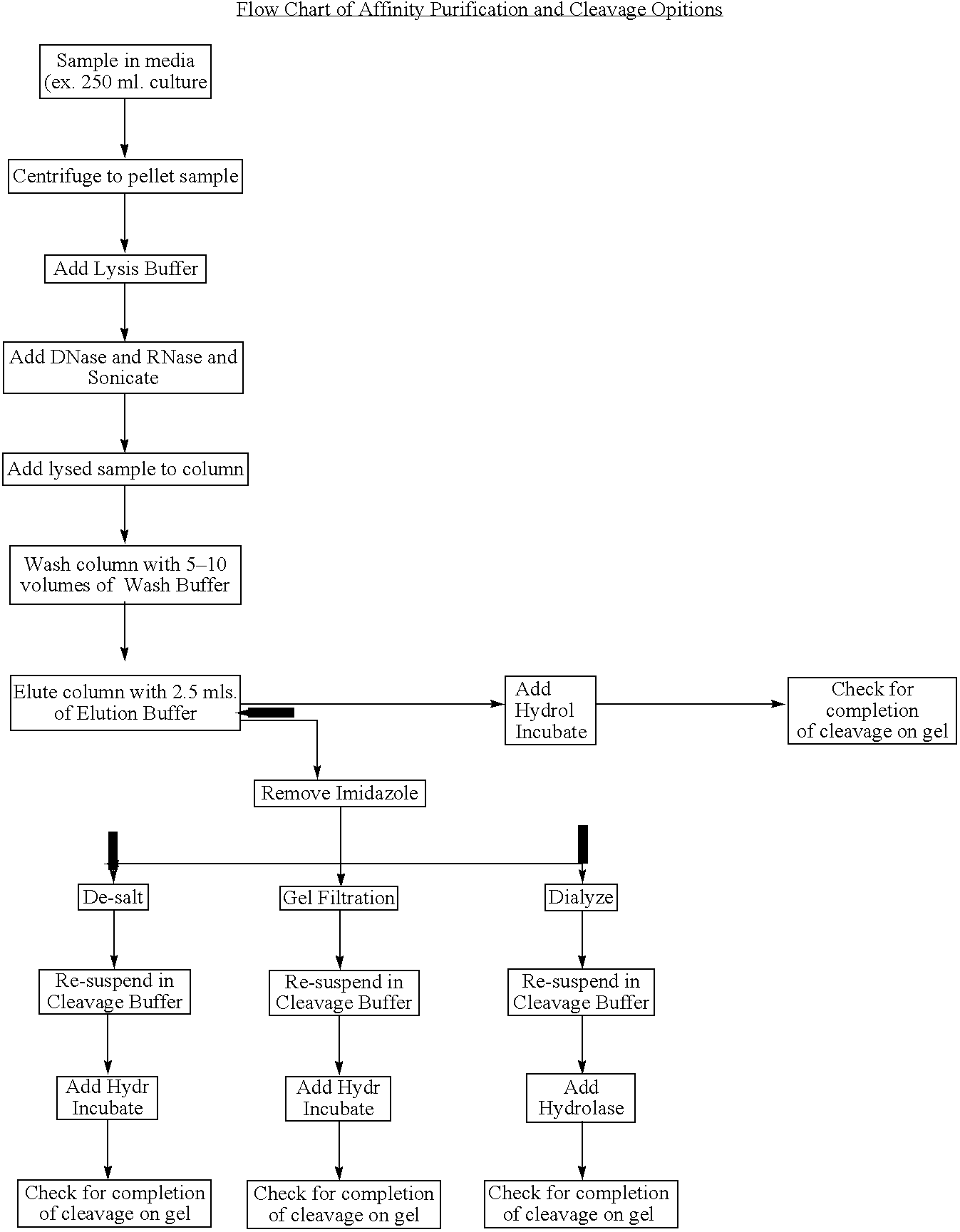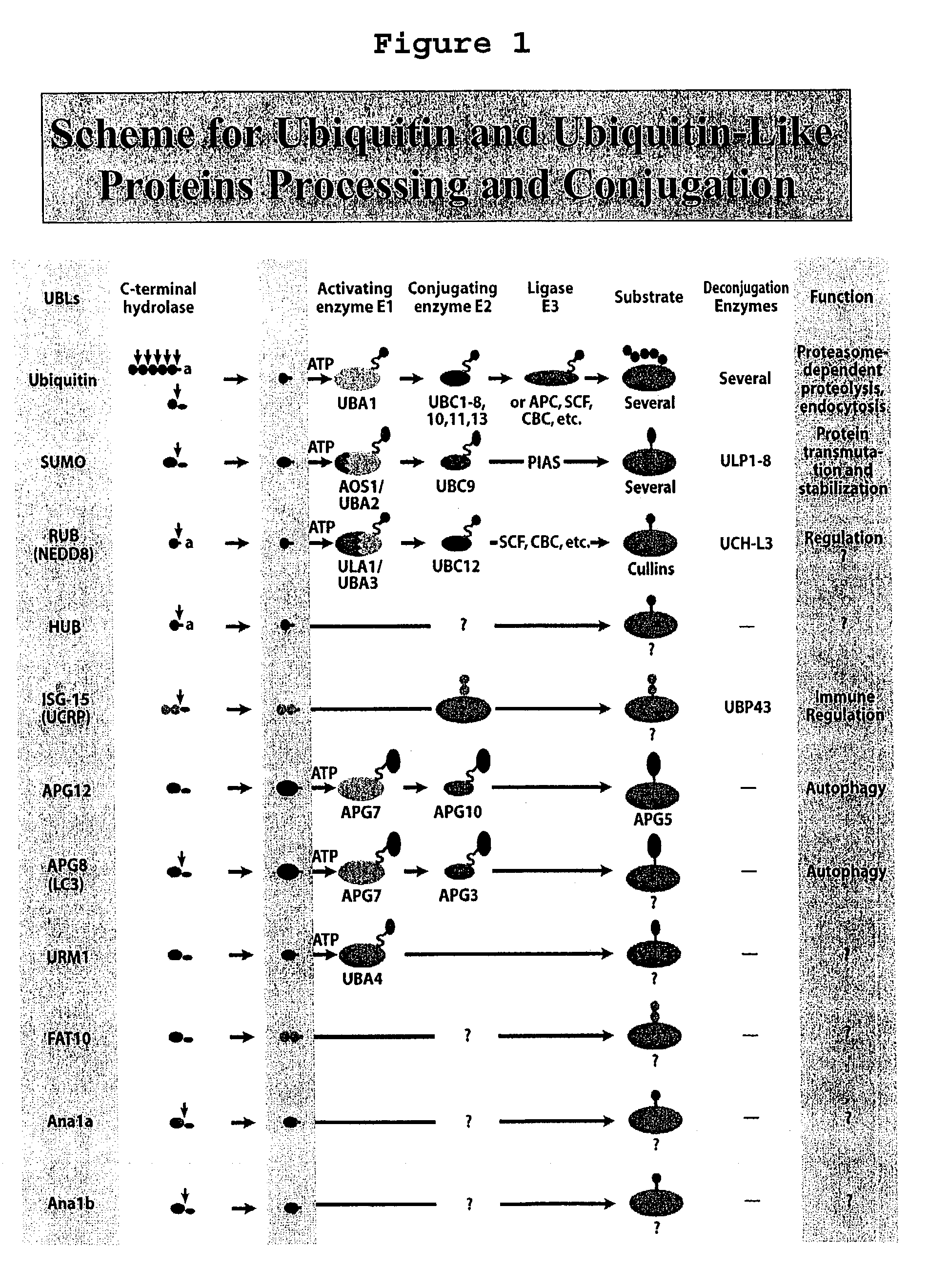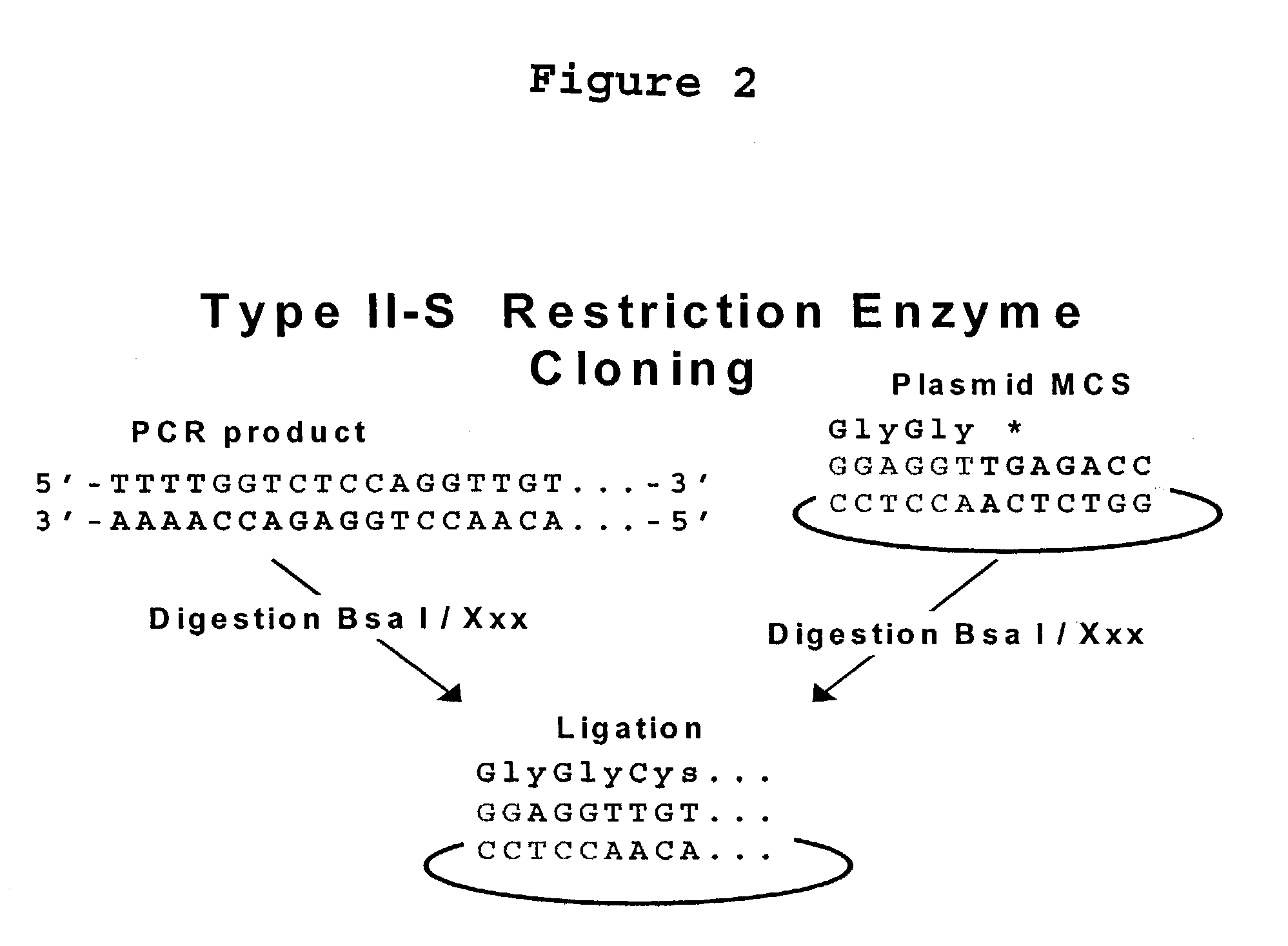Methods and compositions for protein expression and purification
a technology of protein expression and purification, applied in the field of recombinant gene expression and purification of expressed proteins, can solve the problems of affecting the efficiency of functional genomic studies, inability to uniformly express and purify, and heterologous gene products that fail to achieve the correct three-dimensional conformation, etc., to achieve the effect of increasing enhancing the secretion of said protein
- Summary
- Abstract
- Description
- Claims
- Application Information
AI Technical Summary
Benefits of technology
Problems solved by technology
Method used
Image
Examples
example i
Attachment of C-Terminus of UBLs to N-Terminus of GFP Enhances the Expression and Solubility of the Protein in E. coli
[0099]The design and construction of all the UBL E. coli expression vectors has been described above. The DNA sequences, accession numbers of the UBL-GFP fusion proteins, and translation frames are shown FIGS. 25–32. FIG. 4A shows the 37° C. expression pattern of GFP, Ub-GFP, SUMO-GFP, Urm1-GFP, Hub1-GFP, Rub1-GFP, Apg8-GFP, Apg12-GFP, ISG15-GFP. Un-fused GFP is generally poorly expressed in E. coli. The data show that all of the UBLs enhance the expression level of GFP to varying degrees. However, the greatest amount of induction was observed with Ub, SUMO, Urm1, Apg8 and Apg12. Induced cells were broken by sonication and soluble proteins were analyzed on SDS-polyacrylamide gels. The stained gel shows (FIG. 4A, Soluble Panel) that ubiquitin, SUMO, Urm1, Hub1 and ISG15 were able to solublize the GFP while Rub1, Apg8 and Apg12 fusion proteins were not soluble, howeve...
example ii
SUMO-FUSION EXPRESSION IN YEAST AND INSECT CELLS
Fusions of C-terminal UBLs to the N-terminus of GFPs Are Cleaved in Yeast
[0105]To further assess the utility of UBL fusion in eukaryotic cells we expressed all of the UBL-GFP fusions previously described in FIG. 4 in yeast. S. cerevisiae BJ1991 strain was transformed with either YEp-GFP or YEp-UBL-GFP fusion constructs using standard procedures. Positive clones were grown in YPD medium and induced with 100 μM CuSO4 at cell density OD600=0.2 for 3.5 hours. Total cell extracts were prepared by boiling the yeast cells in SDS-PAGE buffer. Twenty ug of proteins were analyzed on 12% SDS gels. A replica gel was stained in Coomassie blue and another gel was blotted and probed with antibodies against GFP. Data in FIG. 9 shows that Ub-GFP, SUMO-GFP and ISG15-GFP fusions were efficiently cleaved in yeast, while Rub1-GFp fusion was partially cleaved. Apg8-GFP fusion was cleaved into two fragments. It is noteworthy that all the UBL-GFP fusions were...
example iii
SUMO Protease ULP1 Cleaves A Variety of SUMO-Fusion Proteins: Properties and Applications in Protein and Peptide Expression and Purification
[0124]Yeast cells contain two SUMO proteases, Ulp1 and Ulp2, which cleave sumoylated proteins in the cell. At least eight SUMO hydrolases have been identified in mammalian systems. The yeast SUMO hydrolase Ulp1 catalyzes two reactions. It processes full length SUMO into its mature form and it also de-conjugates SUMO from side chain lysines of target proteins. Examples I and II establish our findings that attachment of SUMO to the N-terminus of under-expressed proteins dramatically enhances their expression in E. coli, yeast and insect cells. To broaden the application of SUMO fusion technology as a tool for expression of proteins and peptides of different sizes and structures, the ability of Ulp1 to cleave a variety of proteins and peptides has been examined. Purified recombinant SUMO-GFPs were efficiently cleaved when any amino acid except Prol...
PUM
| Property | Measurement | Unit |
|---|---|---|
| pH | aaaaa | aaaaa |
| OD | aaaaa | aaaaa |
| pH | aaaaa | aaaaa |
Abstract
Description
Claims
Application Information
 Login to View More
Login to View More - R&D
- Intellectual Property
- Life Sciences
- Materials
- Tech Scout
- Unparalleled Data Quality
- Higher Quality Content
- 60% Fewer Hallucinations
Browse by: Latest US Patents, China's latest patents, Technical Efficacy Thesaurus, Application Domain, Technology Topic, Popular Technical Reports.
© 2025 PatSnap. All rights reserved.Legal|Privacy policy|Modern Slavery Act Transparency Statement|Sitemap|About US| Contact US: help@patsnap.com



